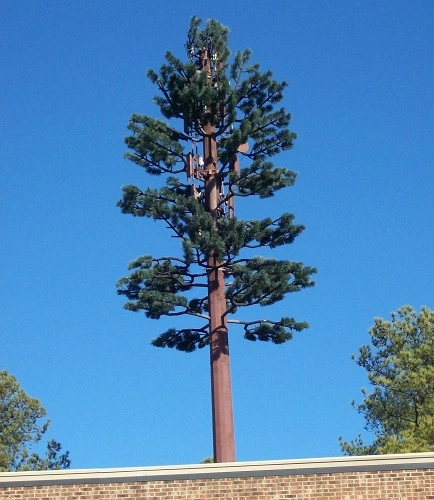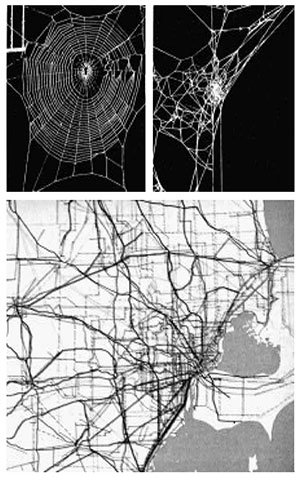
While the extent of the Internet’s impact on the conception of the public sphere remains debatable, traditional boundaries have certainly become blurred between the physical and the virtual as well as the public and the private. But if wireless technology is largely invisible, it largely eludes a politics of representation. Eric Kluitenberg, perhaps best known for his whimsical Book of Imaginary Media (Make sure to watch the DVD with Peter Blegvad’s unforgettable performance!), develops a critical approach to wireless politics in “The Network of Waves: Living and Acting in a Hybrid Space.”
Building on Manuel Castells’s formulation of the “network society,” Kluitenberg questions the dichotomy Castells proposes between two kinds of spatial logic: “the logic of material places and locations (space of place) and the logic of intangible flows of information, communication, services and capital (space of flows)” (9). Kluitenberg critiques the ahistoricity of Castells’ model, and contends that Castells’ binary of material “spaces of place” and immaterial “spaces of flows” hardly squares with the current tendency of information technologies to blur these very distinctions between materiality and immateriality. As a corrective, Kluitenberg proposes the concept of “hybrid space:” “the hybridity of this spatial concept refers not only to the stratified nature of physical space and the electronic communication networks it contains, but every bit as much to the discontinuity of the ‘connectivity’ or degree of connection between the multiplicity of communication networks” (10). Not all networks are created equal, and each network links up with another at a different scale: local, regional, or global.
In tandem with this critique of network studies, Kluitenberg develops a critique of the limits of visual culture studies. The “Diktat of Visibility” excludes the invisible operations of wireless technologies, and tends to frame the limits of visual culture in terms of the “screen” (11). Beyond the visible public sphere, wireless transmitters and receivers play a key role in the creation of “augmented space” (e.g., wearables, sensors, remote activation). As a result, new regimes of controlling public and private space have come about: RFID cards are used for public transportation; ID chips are implanted in pets and workers; all of which allows for data collection. According to Kluitenberg, whenever technology becomes invisible, we stop being aware of it and considering it as a construct, which opens up the possibility of authoritarianism. Initiatives are increasingly distributed between producers and consumers; and more and more decisions are made at the nodes of networks, rather than at the hubs, which creates a space in which a sovereign subject can shape his or her own autonomy.
To intervene in the creation of these hybrid spaces, Kluitenberg proposes eight main strategies (14-16):
- “tactical cartography,” a form of psychogeography that makes local area networks visible;
- “disconnectivity,” or “the right and power to be shut out, to have the option, for a longer or shorter time, to be disconnected from the network of waves,” as Evgeny Morozov will also insist on;
- “sabotage,” or intentionally disrupting public and private infrastructures;
- “legal provisions, prohibitions,” presumably governing wireless networks and spectrum sharing;
- a “reduction in economic scale” designed to prevent continued increases in economic scale;
- shifting our focus from privacy to “accountability and public transparency”;
- “deliberate violation of an imposed spatial programme,“ meaning mass-scale civil disobedience;
- “the creation of new social and political players – public action,” or using public spaces for strategic purposes.
One main implication of Kluitenberg’s treatment of these strategies and practices is that the politics of wireless networks depends largely on non-technical interventions. His examples of flash mobs, the “Reclaim the Streets” movement, and perhaps even the Xchange network differ strikingly from Jussi Parikka’s discussion of hardware modifications. For Kluitenberg, even in a wireless world, “presence” remains the main catalyst of political change.
Source
Kluitenberg, Eric. “The Network of Waves: Living and Acting in a Hybrid Space,” Open 11: Hybrid Space (2006).







